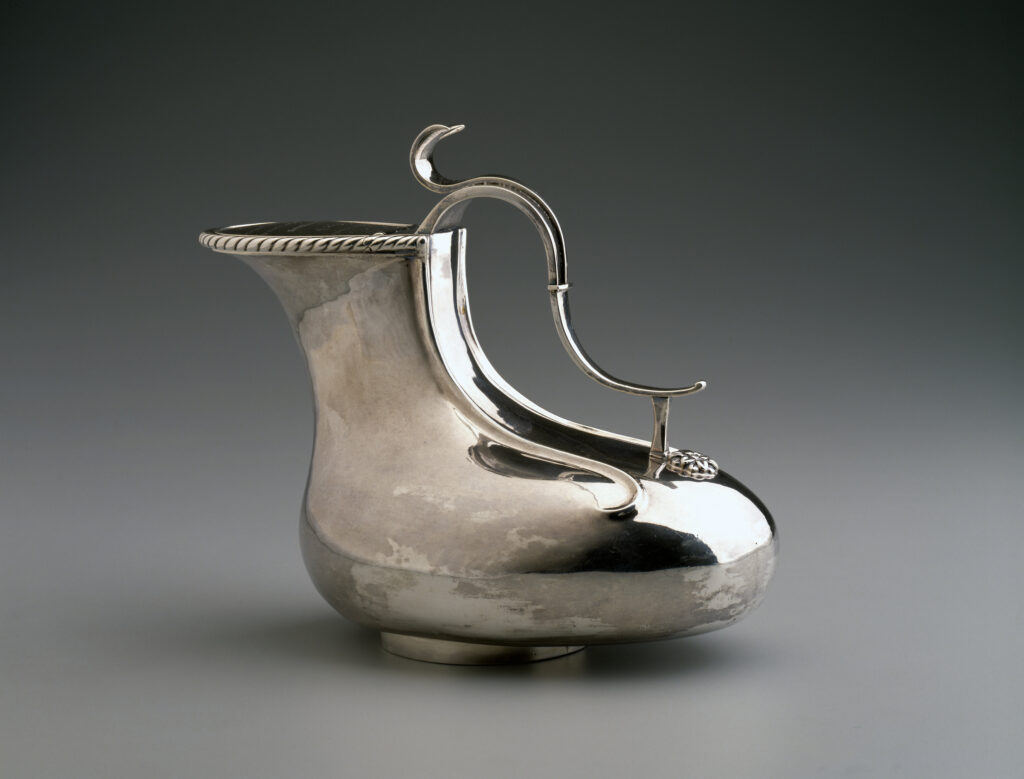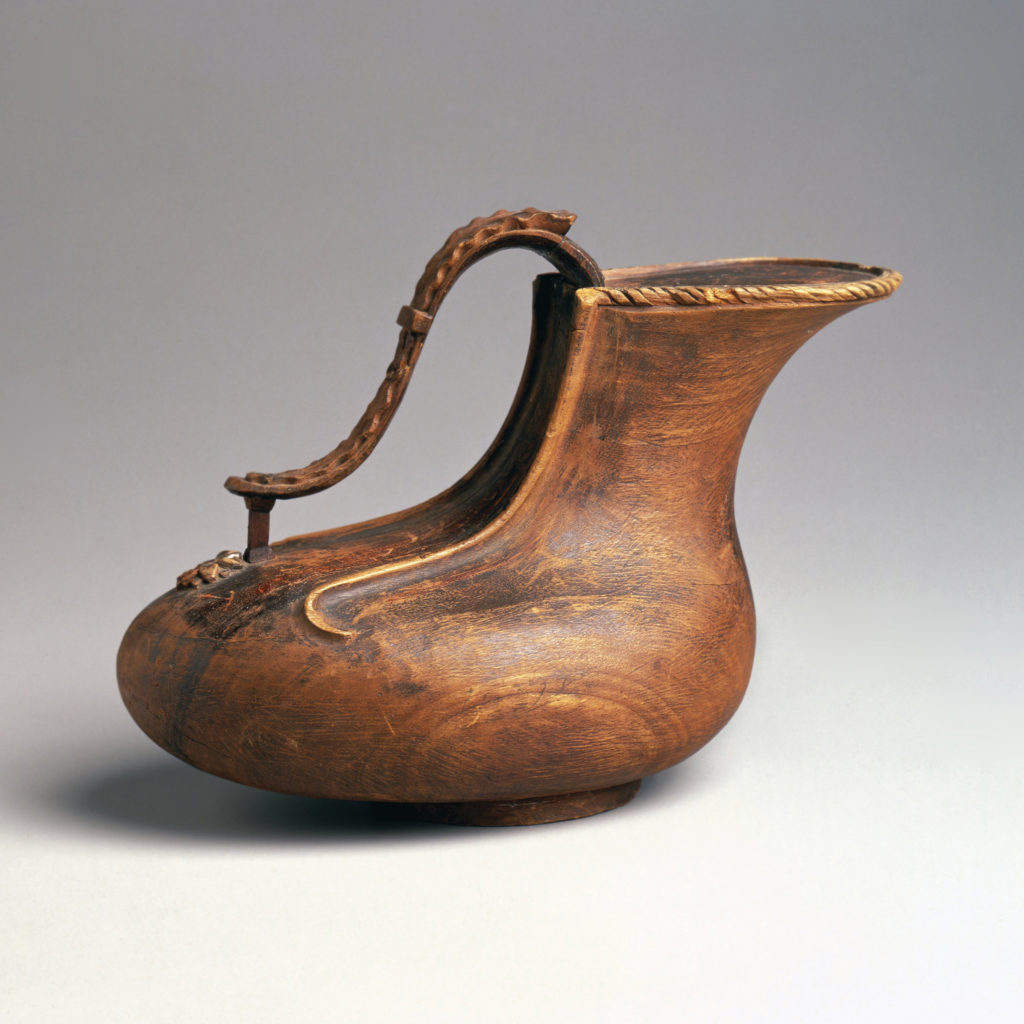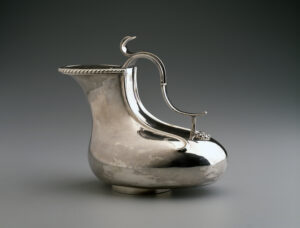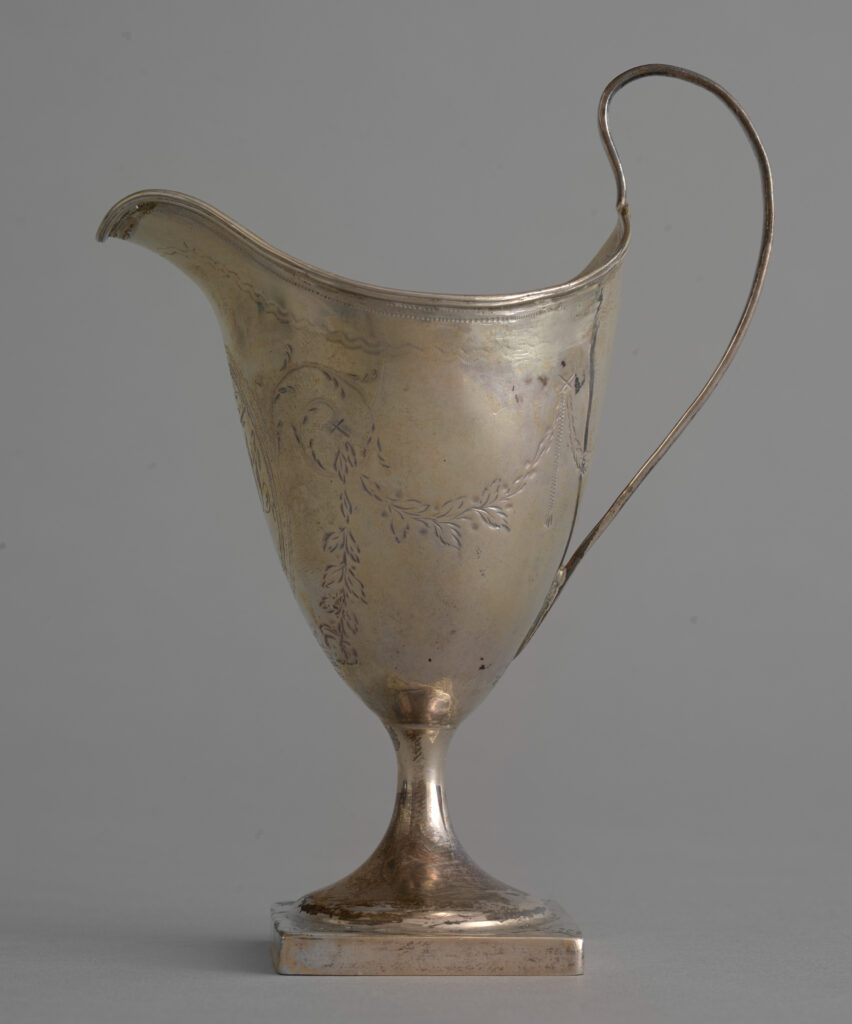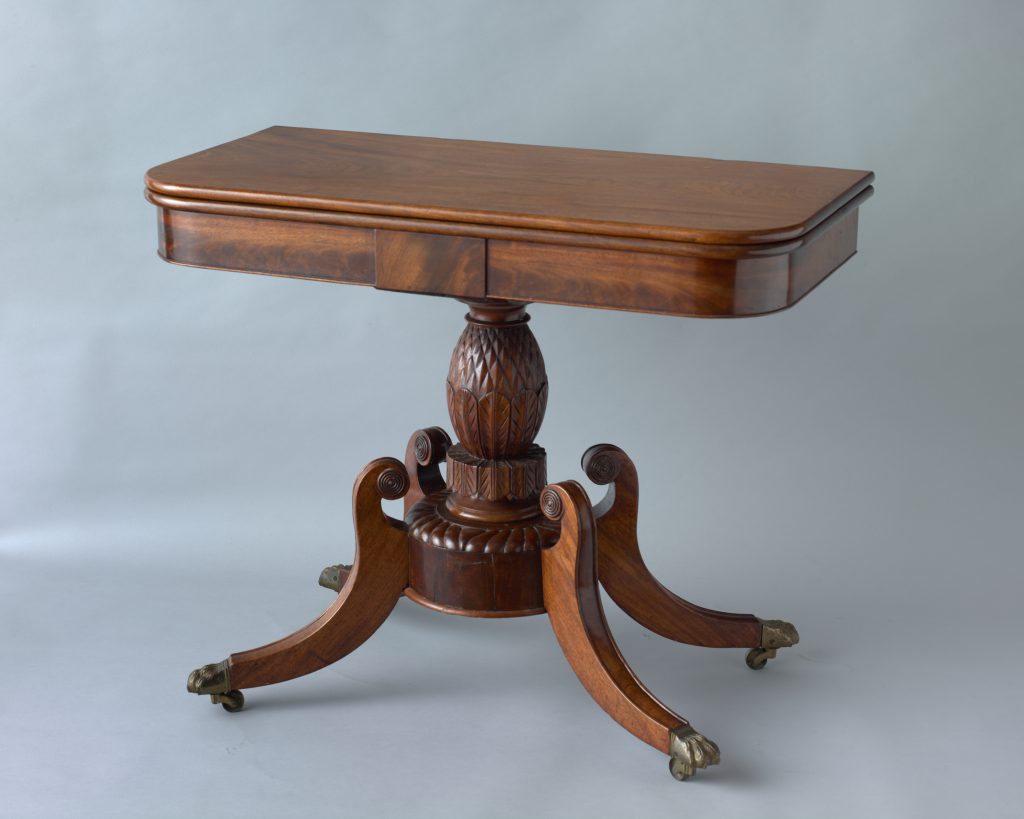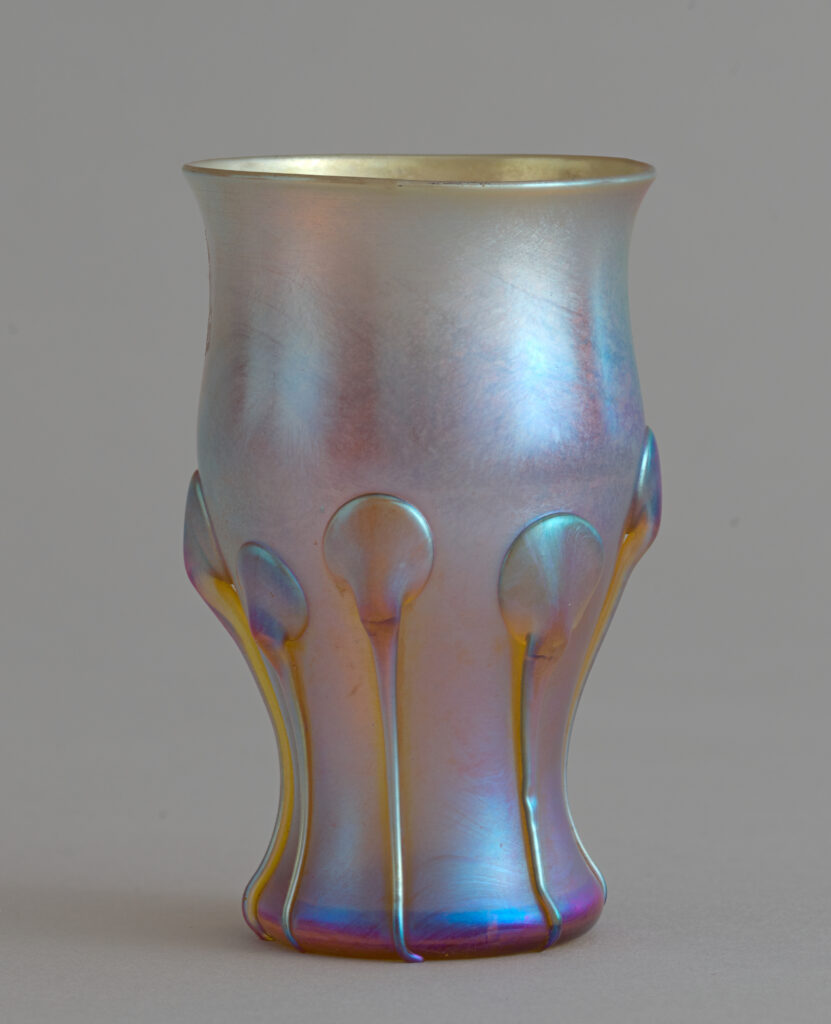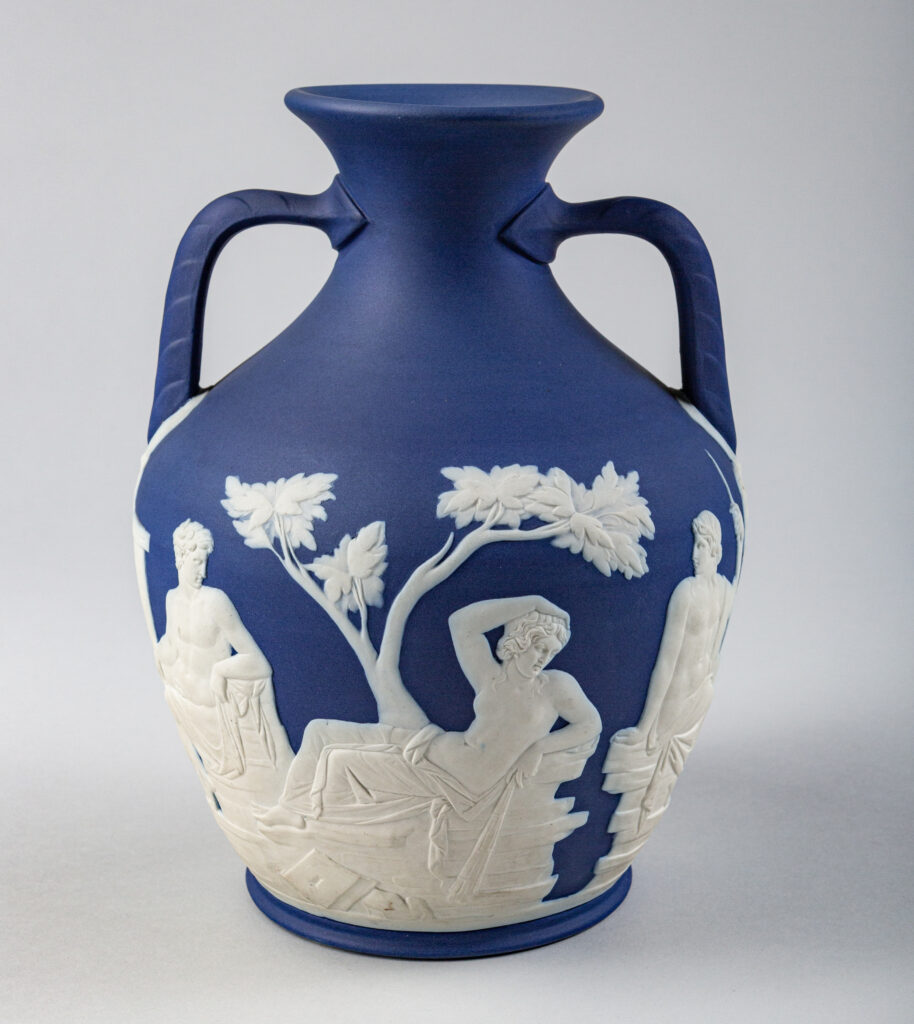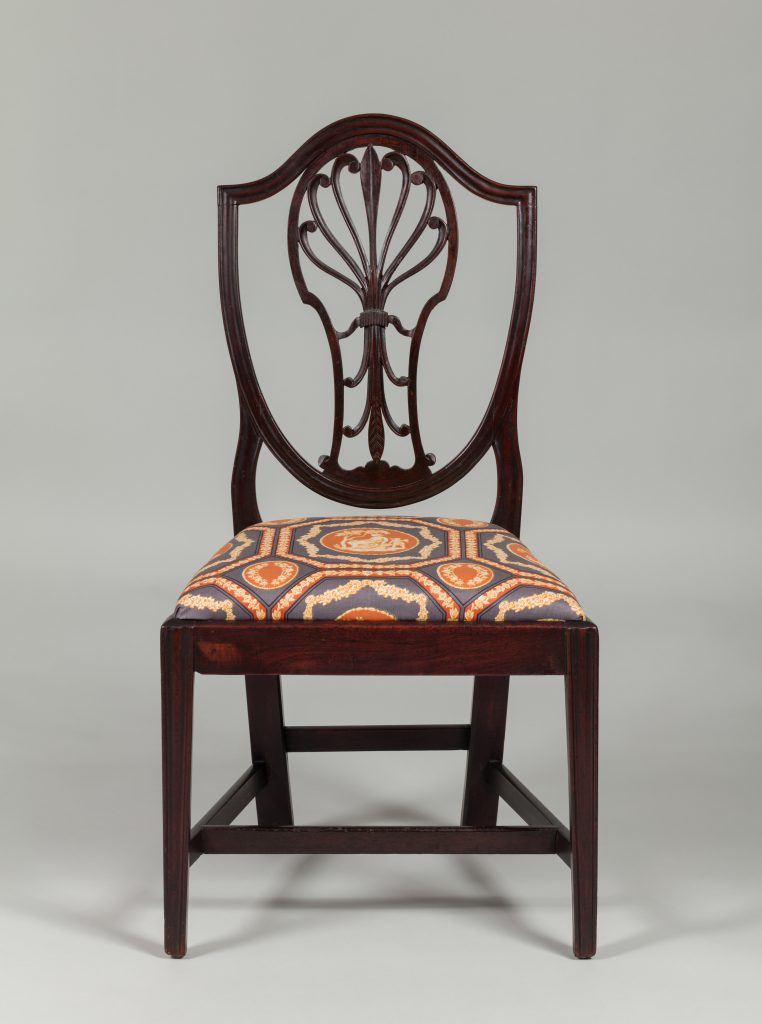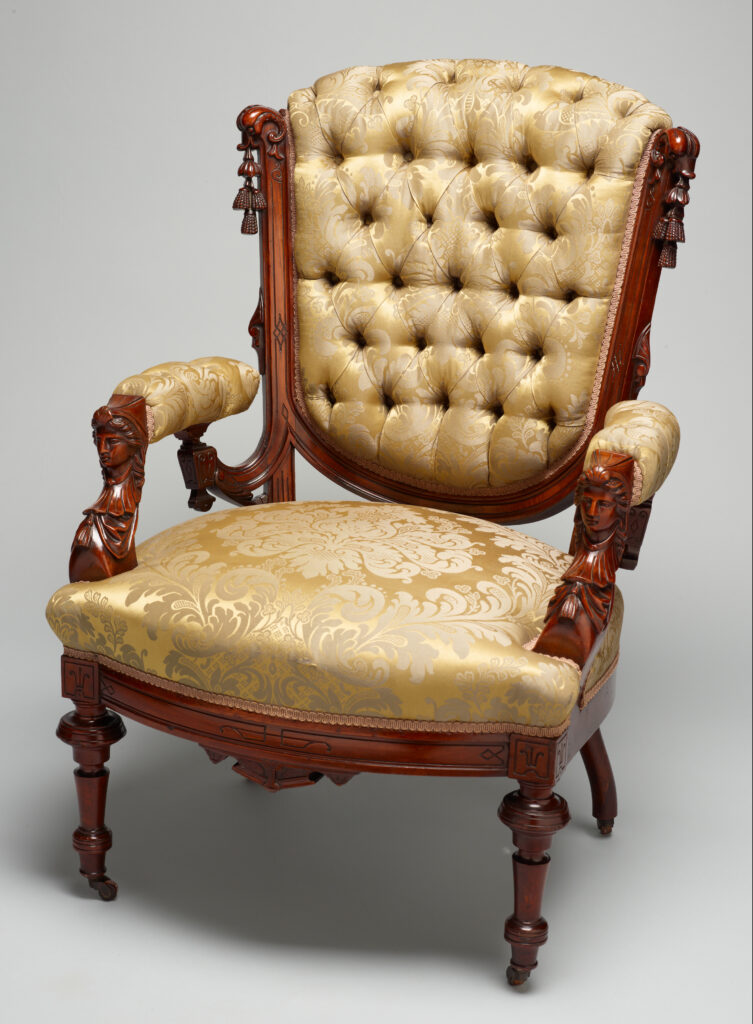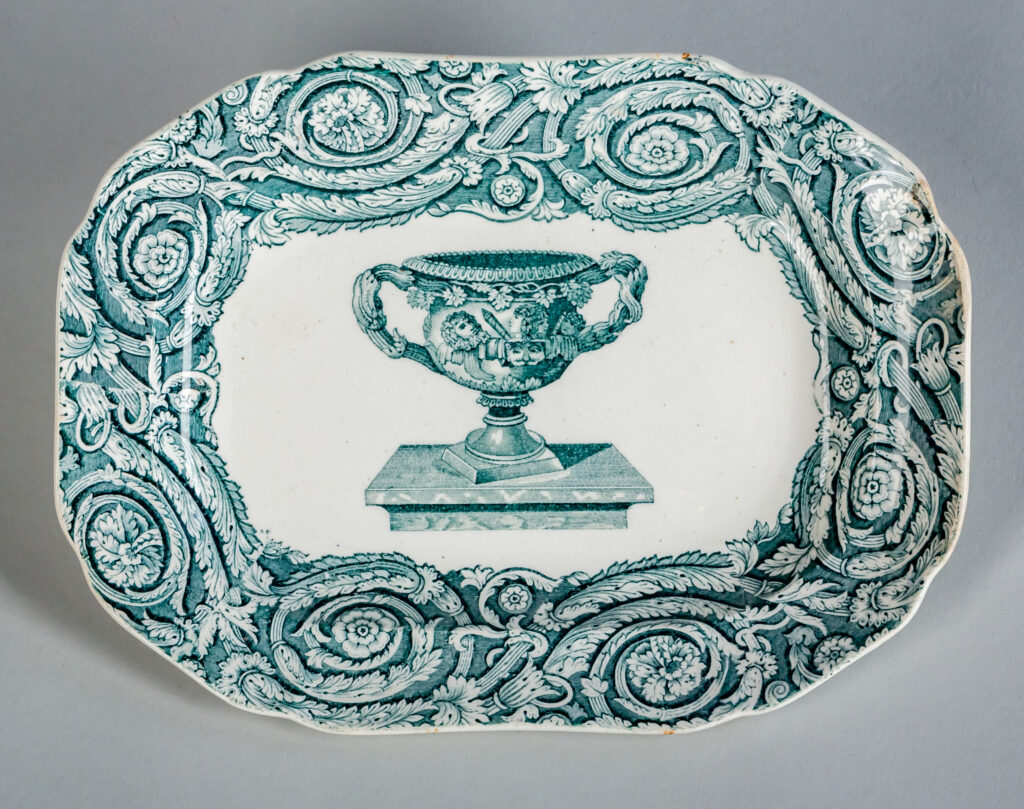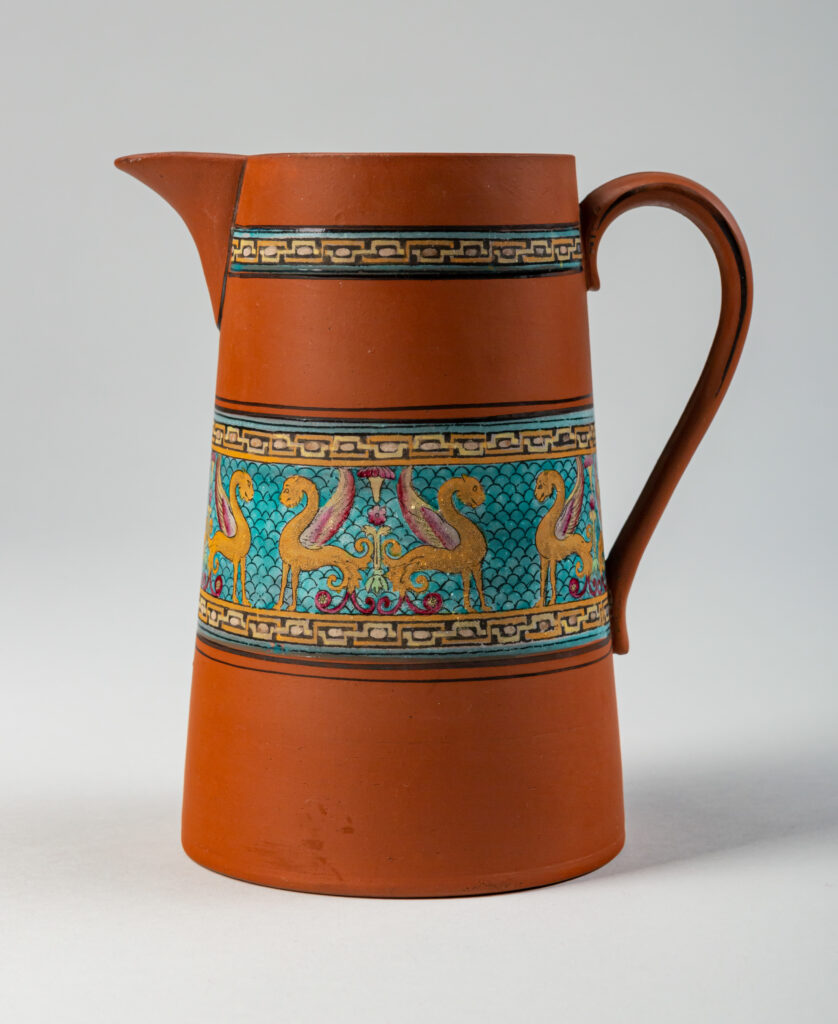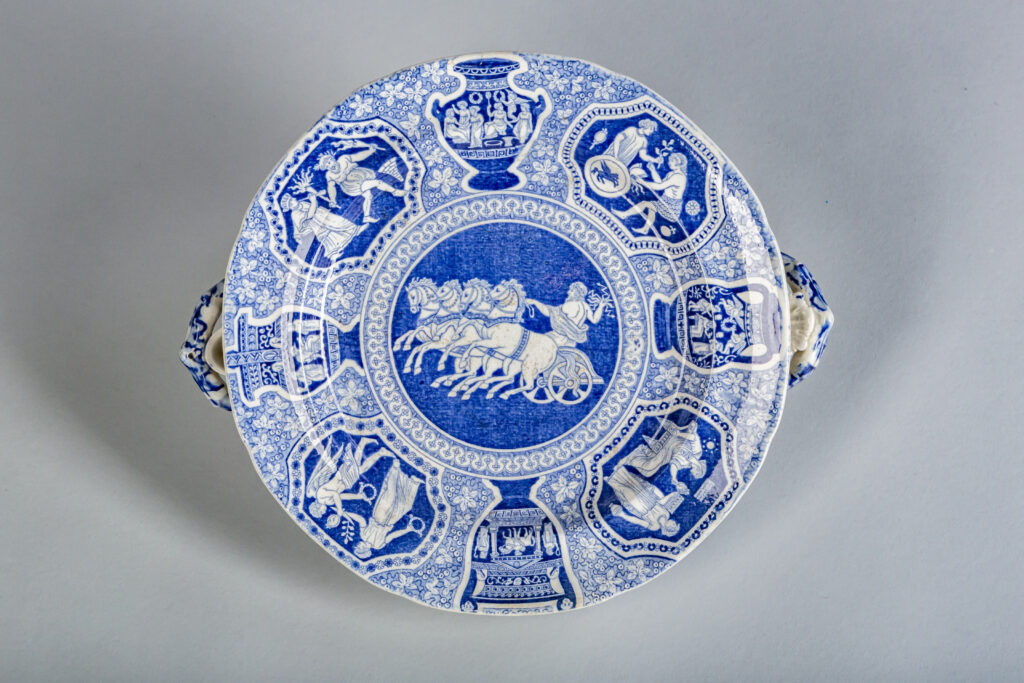Silver askos (oil flask)
Loan from Monticello
This silver askos (oil flask) and its wooden model reveal Thomas Jefferson’s deep and imaginative engagement with the ancient world. Commissioned during Jefferson’s tour of the south of France in 1787, they reflect a statesman “nourished by the remains of Roman grandeur,” as Jefferson wrote, captivated by his visits to ancient theaters, aqueducts, and temples. While Jefferson had already begun planning buildings after ancient models, his visits to Roman ruins allowed him to study firsthand the ancient architecture that he had previously encountered only in text.
The wooden model was copied after an ancient askos in the collection of Jean François Seguier, the original excavator of the Maison Carrée, a Roman temple at Nîmes. Jefferson originally intended the askos as a fitting gift for the antiquarian artist and architect Charles-Louis Clérisseau, in gratitude for his help in designing the Virginia State Capitol, based on the Maison Carrée.
While the original model never reached Jefferson in Paris and another gift was eventually selected for Clérisseau, Jefferson had a second wooden model produced for himself. A decade later, following his election to the presidency, Jefferson commissioned a silver copy from the Philadelphia silversmiths Simmons and Alexander. The lid of the askos is inscribed: “[Copied from] a model taken in 1778. by Th. Jefferson from a Roman Ewer in the Cabinet of antiquities at [Nismes.].” The askos was later used as a chocolate pot by the Jefferson family at Monticello.
